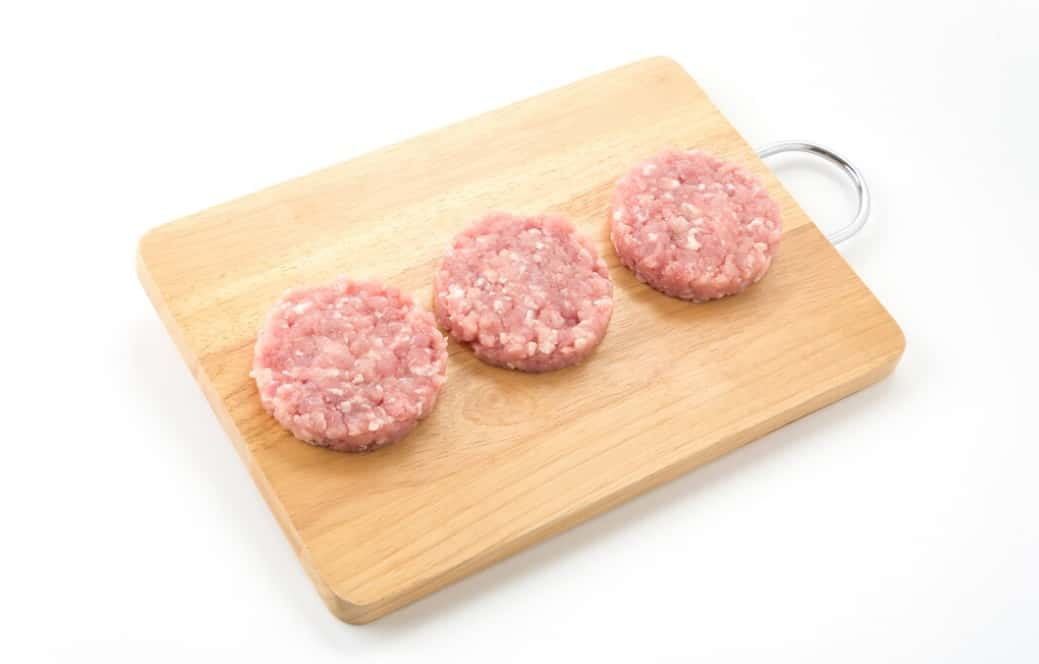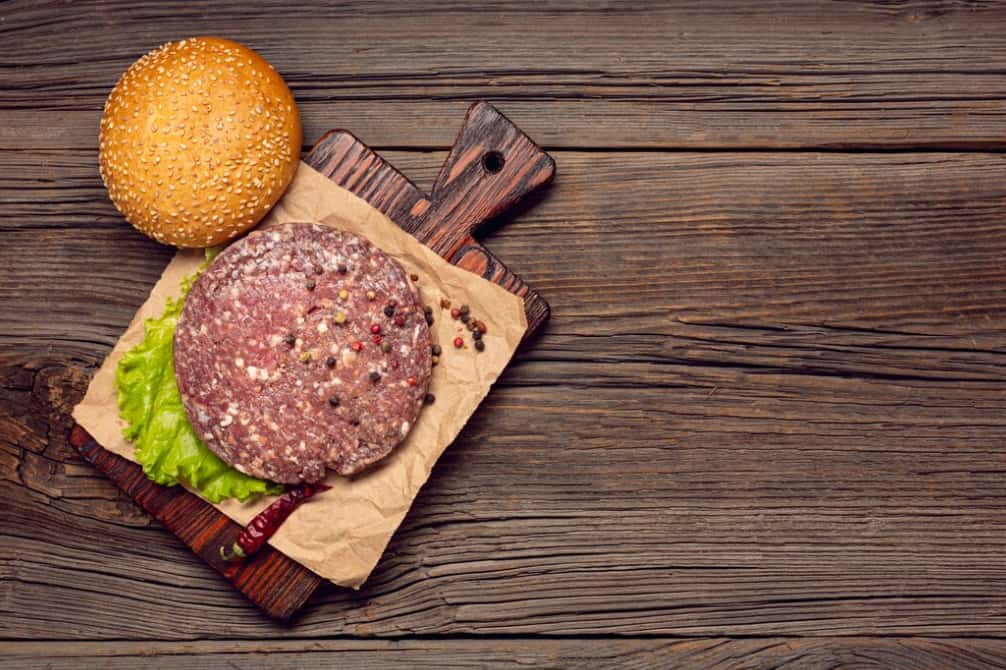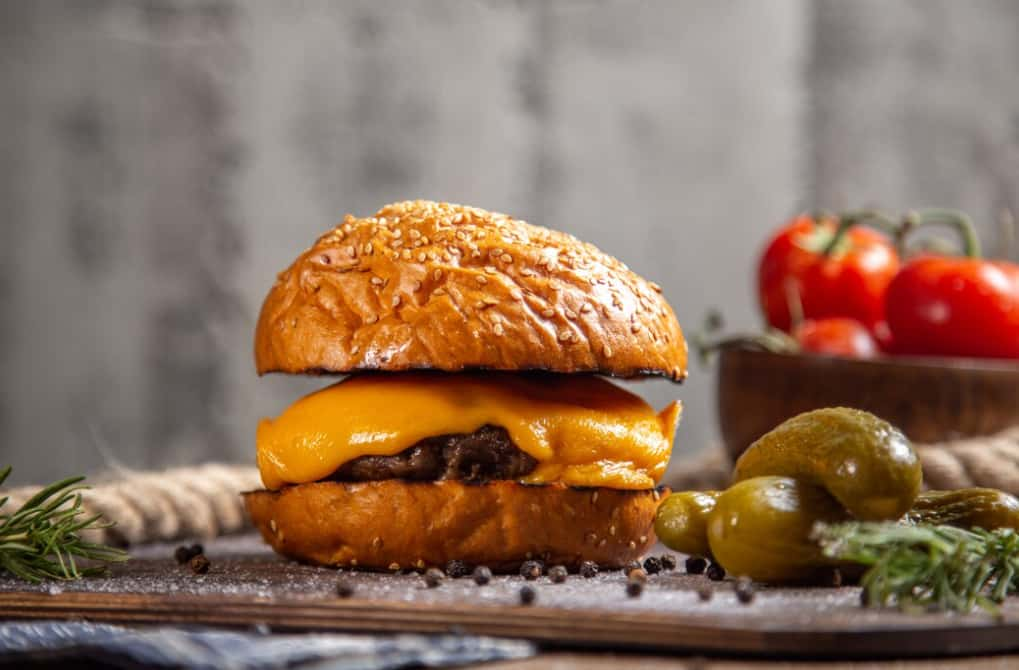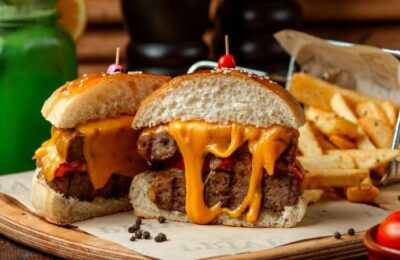Curious about crafting those deli-style, perfectly shaped hamburger patties at home? You’re not the only one seeking the secret. This guide is here to reveal insights and techniques from those who have mastered the art, allowing you to produce a set of patties that will be the highlight of any cookout.
Barbecues are a timeless tradition, perfect for uniting friends and family, and no gathering is truly complete without the sizzle of burgers on the grill. When life gets hectic, ground beef becomes the go-to for its simplicity and quick cooking time, ideal for those who can’t afford to spend hours in the kitchen.
Yet, to ascend to the rank of a true grill aficionado, one must learn the fine art of burger preparation. It’s not just about shaping ground beef into a round form; it’s about crafting a delectable culinary experience. The secret lies in selecting quality meat and mastering the patty-forming technique. Aim for a burger that’s not just a feast for the taste buds but also a perfect fit for your bun. With the correct approach and a dash of culinary flair, anyone is capable of making an impeccable burger patty, even without the convenience of a Hamburger Press.
How Big to Make a Hamburger Patty?
Before we start shaping the burger patties, we need to know how big they should be. Keep in mind that hamburger patties will shrink slightly when cooked. Therefore, you should make the patties at least one inch thick and one inch larger than the bun. With most buns around three inches in diameter, your patties must be 4 inches to allow for the shrinking.
Methods for Molding Ideal Hamburger Patties
The Customizable Hands-On Approach
Once you’ve incorporated your preferred spices and seasonings into the ground meat, shaping hamburger patties becomes a personalized process. Follow these steps:
- Take a handful of ground meat;
- Gently press it into the palm of one hand;
- Cup the beef with the other hand to assist in shaping;
- Press a dimple into the center of each patty, ensuring a 1/2-inch lip around the edge.
While this method keeps the patties flat, variations in size, shape, and thickness may occur.
Precision Hands-On Technique
Eliminate guesswork and ensure uniformity in your burger patties with this precise shaping method:
- Utilize a kitchen scale to measure equal amounts of ground beef for each patty;
- Place a piece of parchment paper on a baking tray, marking circles with a lid or another circular object for your desired patty size;
- Wear gloves or dampen your hands to prevent stickiness;
- Shape each portion of ground beef into a ball, situating them within the outlined circles;
- Gently flatten the balls, ensuring they cover the marked circles;
- Create a small indentation in the center of each patty with your thumb to prevent uneven cooking;
- Cover and refrigerate the patties for a cooling effect.
Homemade Burger Patty Technique Using Kitchen Lids
In your kitchen, you likely have a collection of lids of various sizes, ideal for crafting homemade burger patties. These lids, ranging from small pickle jar lids to larger Tupperware tops, are perfect for shaping patties to fit any bun size, from tiny sliders to larger gourmet buns. Here’s how to use them effectively:
- Season your ground beef with salt, black pepper, and any additional spices you prefer. Use a kitchen scale to portion the beef into equal sizes;
- Choose a lid approximately 1 inch larger than your hamburger bun for optimal patty size;
- Line the inside of the chosen lid with plastic wrap for easy patty removal;
- Place the portioned beef inside the lid and press it evenly with your hand;
- Trim any excess meat from the edges;
- Use the plastic wrap to gently lift the patty out. Repeat this process for as many burgers as needed;
- Chill the formed patties in the refrigerator for at least an hour before grilling;
- Before grilling, press a small dimple in the center of each patty to ensure they stay flat during cooking.
Alternative Container Lid Method for Shaping Patties

For those who prefer not to use their hands directly, another method involves using a container lid to shape the patties:
- Portion out 8 ounces of meat per patty, roughly the size of a tennis ball;
- Cut two parchment paper discs for each patty;
- Place one meatball on one of the paper discs;
- Insert the second disc into a large jar lid;
- Use the paper-lined lid to press down on the meat, shaping it into a patty;
- This method creates a well-formed patty, sandwiched between two paper discs, ideal for neat stacking and storage in the refrigerator or freezer;
- Like with the first method, make a small dimple in the center of each patty before grilling to keep them flat while cooking.
Custom Burger Patty Maker Using Recycled Containers
For a more hands-on approach to shaping burger patties, consider repurposing plastic food containers, such as those from takeout or sour cream. This method requires a bit more initial preparation but offers a unique DIY experience:
- Gather a plastic container, ideally with a diameter slightly larger than your hamburger buns;
- Use an Exacto knife, box cutter, or sharp scissors, along with a ruler or tape measure and a marker;
- Measure and mark a spot on the container to indicate the desired diameter for your patties. Make additional marks 3/4 inches above and below this point, repeating around the container to outline a circular section;
- Carefully cut along these lines to create a plastic ring mold about 1 1/2 inches wide for shaping patties.
Before using the mold:
- Clean the ring thoroughly.
- Place it on a non-stick surface, such as a plastic cutting board, with the narrower side down;
- Place a pre-measured ball of ground beef in the center and gently press to fill the mold;
- Flip the mold and ease the patty out of the wider side;
- A light coating of oil inside the ring can help prevent sticking;
- Store patties in the fridge, separated by wax paper, until ready to grill;
- Before grilling, press a dimple in each patty’s center for even cooking.
Dual Deli Lid Patty Press Method
For an efficient and clean method, use two deli container lids:
- Season and portion your ground beef according to the desired patty size;
- Cut parchment paper discs to fit the lids;
- Place a disc in one lid, add a portion of beef, then top with another disc in the second lid;
- Press the second lid onto the beef, applying even pressure to form a perfectly shaped patty;
- Store patties in the refrigerator with wax paper discs on both sides for easy separation;
- Before grilling, indent each patty’s center to ensure they cook evenly without puffing up.
How Not Shape Your Hamburger Patties
The spatula press, or “smashing” method, is a more rustic approach to forming burger patties and is often debated among BBQ enthusiasts. While it’s challenging to achieve uniform size and thickness with this method, some grill masters still prefer it for its simplicity. Here’s how it’s done:
- Start by combining your ground beef with a selection of spices in a bowl;
- Roll the beef into balls of roughly equal size;
- Heat up your grill or griddle before placing the meatballs onto it;
- Use a spatula to press each ball, flattening it into what’s known as a “smash burger.”;
- Apply enough pressure to achieve your desired thickness, but be mindful not to over-flatten;
- Allow each patty to cook for about a minute before flipping;
- Continue cooking the patties to your preferred level of doneness.
One downside of this method is the potential loss of moisture and fat during pressing, which can result in drier, tougher burgers, especially if not carefully managed. This technique may not yield the precision of other methods, but it offers a quick and hands-on way to create burgers with a more homemade, rustic feel.
Essential Guidelines for Crafting Exceptional Burgers
Creating the perfect burger is an art, blending unique recipes and techniques. Whether you’re experimenting with various ingredients like eggs, breadcrumbs, or a plethora of seasonings, the foundation of a great burger lies in a few essential practices. Here’s how to elevate your burger game to professional standards, even without specialized equipment:
Selecting the Ideal Ground Meat for Burgers
The cornerstone of any great burger is the quality of the meat. Given that burgers are relatively simple in terms of ingredients, the choice of meat significantly influences the overall taste. Opting for high-quality meat, be it grass-fed, locally sourced from a butcher, or selected from a grocery store, can substantially elevate your burger experience.
For superior results, choose freshly ground, premium beef chuck with an 80/20 ratio of meat to fat. This balance ensures that your burgers remain moist and flavorful, holding together well during cooking. For those preferring a leaner option, a 90/10% blend is viable, though be aware that leaner meats often result in drier burgers.
It’s crucial to use meat with enough fat to maintain juiciness. However, going beyond an 80/20 mix may lead to excessive shrinkage and overly greasy patties during cooking.
Seasoning the Ground Beef Effectively
- Begin by laying the beef flat and evenly seasoning with salt and pepper;
- At this stage, you can introduce additional flavor enhancers like chopped bacon or Worcestershire sauce. Remember, the key is subtlety; avoid over-mixing;
- High-quality beef often requires minimal seasoning. Let the natural flavors shine through;
- Once your patties are shaped, refrigerate them. Just before grilling, season the exteriors once more with salt and pepper for a flavor boost.
Gentle Handling for Optimal Texture
- Minimize handling of the meat to prevent a dense, meatloaf-like texture;
- Gently roll the beef into balls and press into patties using your chosen method, avoiding multiple reshaping attempts;
- The ideal texture is achieved when you can still discern the individual strands of meat, indicative of minimal compaction;
- Place the ground beef in a bowl and fold in seasonings gently. Overworking the meat can lead to toughness;
- A quick test for proper mixing is to press a small amount between your palms and see if it adheres slightly to your hand. This indicates it’s ready to be shaped into patties;
- Keeping the ground meat loosely intact, as it comes out of the grinder, ensures a tender and juicy burger.
The Importance of Temperature Control in Burger Preparation

Understanding the role of temperature in the burger-making process is crucial for achieving the best results. Contrary to common practices with other meats, it’s essential to keep ground beef cold during the burger preparation process. This includes the stages of seasoning, shaping, and storing before grilling.
When handling ground beef for burgers, maintaining a low temperature is beneficial. Warmth causes the fat in the beef to soften, leading to a sticky and less manageable consistency. Furthermore, when ground beef is combined with the warmth of your hands, it can lead to premature fat melting on the grill. This often results in burgers that are drier and less flavorful.
Conclusion
DIY techniques for burger preparation offer a range of versatile, affordable options. From simple hand-pressing methods to creative uses of household items like meat presses or jar lids, there’s a technique suitable for every preference. Regular practice with these methods can elevate your burger-making skills, ensuring delicious results whether you’re making beef, veggie, or turkey burgers. Embrace these tips for perfectly shaped, juicy, and flavorful homemade burgers that will delight any crowd.
Frequently Asked Questions
Begin by portioning your ground beef into equal segments. Roll each segment into a ball and then flatten it to create the patty shape. Remember to handle the meat gently to avoid toughening it.
Patty size varies by personal taste. Generally, a weight between 1/3 and 1/2 pounds is preferred. Smaller patties may dry out quickly, while larger ones might not cook as evenly.
Season the patties before shaping them. This ensures even distribution of the seasoning throughout the meat. Apply seasonings sparingly to prevent overpowering the beef’s natural flavor.
Chill the meat thoroughly before forming patties to help maintain their structure. Handle the meat minimally and gently. For extra binding, consider adding an egg or breadcrumbs to the mix.
Cooking time varies based on patty thickness and the heat intensity of your grill or stove. Typically, a 1/2-inch-thick patty should cook for about 3 to 4 minutes per side on high heat.
The most reliable method is using a meat thermometer; the internal temperature should reach 160°F (71°C). Alternatively, you can cut into a patty to visually check if it’s cooked to your liking.


